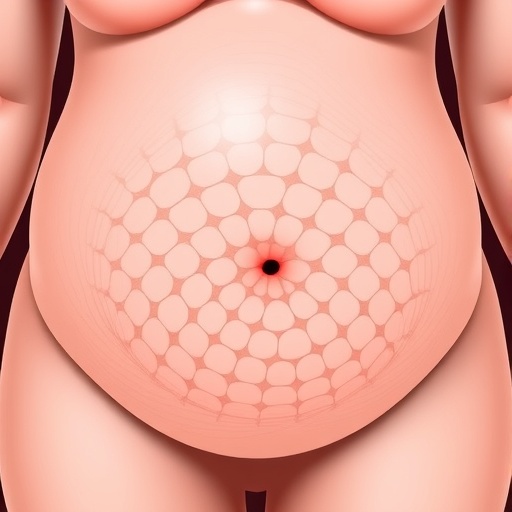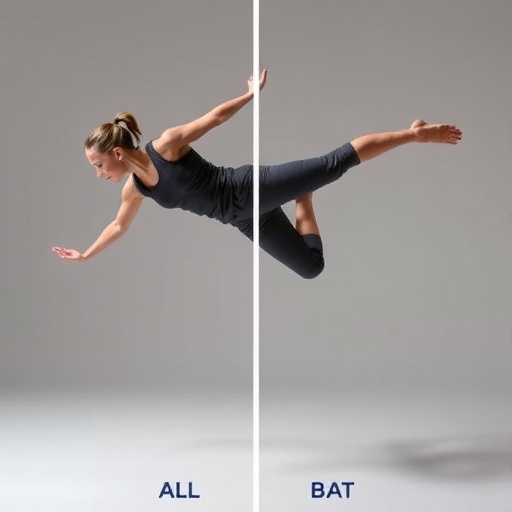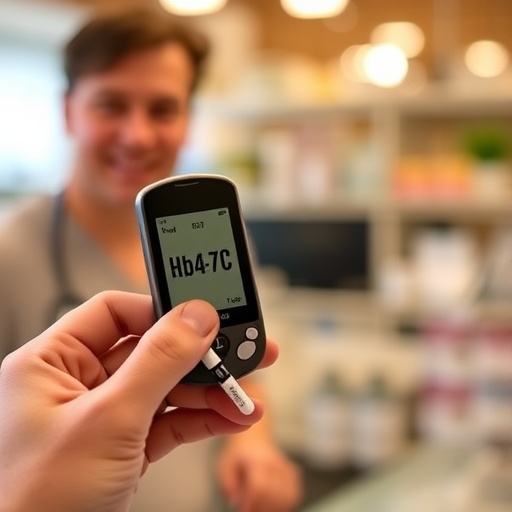
In a groundbreaking study published in Nature, researchers have elucidated the biomechanical principles underlying gastrulation in Drosophila embryos, revealing how patterned invagination acts as a safeguard against mechanical instability. Gastrulation, a pivotal phase in embryonic development, involves dramatic morphological changes that shape the early embryo into distinct tissue layers. The intricate choreography of these movements depends on a delicate balance of forces within the epithelial layer, and the study probes this balance with unprecedented precision.
The investigators employed loss-of-function mutations in key Drosophila genes—buttonhead (btd), even-skipped (eve), paired (prd), sloppy paired (slp), and string (stg)—combined with advanced fluorescence imaging. The embryos expressed membrane-bound fluorescent markers and balancer chromosomes tagged with green fluorescent protein (GFP), thereby enabling live, real-time visualization of cellular behavior during cephalic furrow formation and gastrulation. This approach allowed distinguishing homozygous mutants lacking GFP expression from heterozygotes, facilitating precise phenotypic analyses.
To capture the dynamics of epithelial folding and furrow formation, the team utilized selective-plane illumination microscopy (SPIM) with a Zeiss Lightsheet Z.1 system, optimized for imaging live Drosophila embryos labeled with a membrane-localized mCherry fluorescent protein. Embryos were oriented and mounted on custom-fabricated coverslip strips coated with heptane glue, ensuring a stable and consistent imaging environment. The light-sheet microscopy settings were meticulously chosen to balance spatial resolution (down to approximately 0.14 µm in lateral views) and temporal resolution (45–60 seconds per frame), capturing fine-scale deformations without compromising embryo viability.
Complementing live imaging, in situ hybridization experiments were conducted using advanced Hybridization Chain Reaction (HCR) techniques. Multiplexed detection of critical segmentation genes, including btd, eve, prd, and slp, was performed across diverse dipteran species such as Ceratitis, Clogmia, and Anopheles, providing comparative insights into the conservation of gene expression patterns during early developmental stages. The rigorous fixation, bleaching, and permeabilization protocols ensured high-quality fluorescent labeling suitable for confocal microscopy.
Image processing pipelines leveraged state-of-the-art machine learning—specifically, content-aware image restoration (CARE)—to enhance signal-to-noise ratios and improve axial resolution in volumetric light-sheet datasets. These datasets were further tessellated into cartographic projections of the embryonic epithelial surface using the ImSAnE toolbox. The resulting maps permit quantitative analyses of epithelial strain, fold formation, and morphogenetic dynamics, revealing the spatial and temporal nuance of folding phenomena.
Quantification of ectopic folding events, which occur outside the canonical cephalic furrow domain, was achieved by manual annotation of folds in three-dimensional renderings and mapped onto standardized embryonic coordinates. The researchers further measured fold depth and surface area changes during gastrulation, indicating distinct mechanical responses in mutant embryos compared to wild-type controls. These findings demonstrate that patterned gene expression orchestrates not only biochemical but mechanical regionalization, guiding controlled epithelial buckling.
To decipher the mechanical basis of tissue stability, the researchers developed a computational model treating the embryonic epithelial monolayer as an elastic rod constrained within a rigid semi-elliptical boundary representing the vitelline envelope. This theoretical framework considers both stretching and bending energies with parameters calibrated from biological dimensions. Their simulations captured how the extent of blastoderm compression, modulated by germ band extension, influences the propensity of tissue buckling and fold formation.
The model used discretized particles connected by elastic springs to represent the tissue, with preferred curvature and rigidity modulated across the epithelium. Notably, the introduction of simulated mitotic domains as localized stiffening regions affected fold localization and stability, mirroring the in vivo observations of segmental invagination patterns. Energy minimization algorithms coupled with stochastic noise approximated cellular dynamics, providing predictive power for morphogenetic outcomes under varying genetic and mechanical conditions.
Experimental validation of mechanical predictions was strengthened by laser cauterization and ablation experiments. Pulsed infrared lasers selectively immobilized regions of the dorsal embryonic surface, serving as artificial mechanical constraints. The subsequent analysis of epithelial contour tortuosity and fold formation kinetics revealed how mechanical stresses distribute and dissipate during germ band extension. Laser ablation of single cells and measurement of recoil velocities further elucidated local tissue tension and its modulation by genetic factors.
Across multiple experimental platforms, the study confirmed the reproducibility of observed phenotypes, with extensive biological replicates and consistent gene expression patterns. The researchers performed rigorous statistical analyses using non-parametric tests and presented their results with high transparency, enabling critical assessment and reproducibility of findings.
This combination of genetic manipulation, advanced live imaging, computational modeling, and mechanical perturbation provides a comprehensive multidimensional understanding of how patterned invagination maintains mechanical stability during one of the most critical developmental milestones. By revealing the interplay between gene expression patterning and biomechanical forces, the work sheds light on fundamental principles of morphogenesis that could inform bioengineering and regenerative medicine.
Moreover, the conservation of these mechanisms across various dipteran species underscores the evolutionary significance of spatially patterned invagination. It highlights a robust developmental strategy by which embryos balance morphological complexity with mechanical integrity. The insights from this study open avenues to explore analogous processes in higher organisms and pathological contexts where tissue folding and mechanical homeostasis are disrupted.
Methodologically, this research represents a tour de force in combining live optical sectioning with precise genetic tools and computational physics. The integration of light-sheet microscopy and machine learning-based image enhancement exemplifies cutting-edge approaches in developmental biology. Meanwhile, the custom-designed elastic rod model offers a conceptual tool adaptable to diverse systems involving confined epithelia.
In the broader context, understanding how tissues prevent mechanical instability during morphogenesis is critical for deciphering birth defects and for designing tissue-engineered constructs capable of withstanding physiological forces. The findings herein contribute significantly to the field’s framework for integrating gene regulation, tissue mechanics, and morphogenesis.
Through meticulous experimentation and modeling, this study affirms that patterned invagination is not merely a passive consequence of genetic programs but an active mechanical strategy, ensuring developmental robustness. The work pushes the frontier of our understanding of how living tissues sculpt themselves in the face of physical constraints and dynamic environmental cues.
Future research inspired by these results may delve deeper into molecular mediators of mechanical properties, the crosstalk between cellular proliferation and tissue elasticity, and the scaling laws governing morphogenetic folding in more complex embryos. Such inquiries promise to transform our grasp of biological form and could translate into innovative therapies and biomimetic technologies.
Subject of Research: Gastrulation mechanics and epithelial invagination in Drosophila embryogenesis
Article Title: Patterned invagination prevents mechanical instability during gastrulation
Article References:
Vellutini, B.C., Cuenca, M.B., Krishna, A. et al. Patterned invagination prevents mechanical instability during gastrulation. Nature (2025). https://doi.org/10.1038/s41586-025-09480-3
Image Credits: AI Generated
Tags: advanced microscopy techniques for embryologybiomechanical principles of gastrulationcephalic furrow formation visualizationepithelial layer force balancefluorescent imaging in live embryosgastrulation mechanics in Drosophilaloss-of-function mutations in Drosophila genesmorphological changes during gastrulationpatterned invagination in embryonic developmentreal-time cellular behavior trackingselective-plane illumination microscopy applicationsstability in embryonic tissue formation




